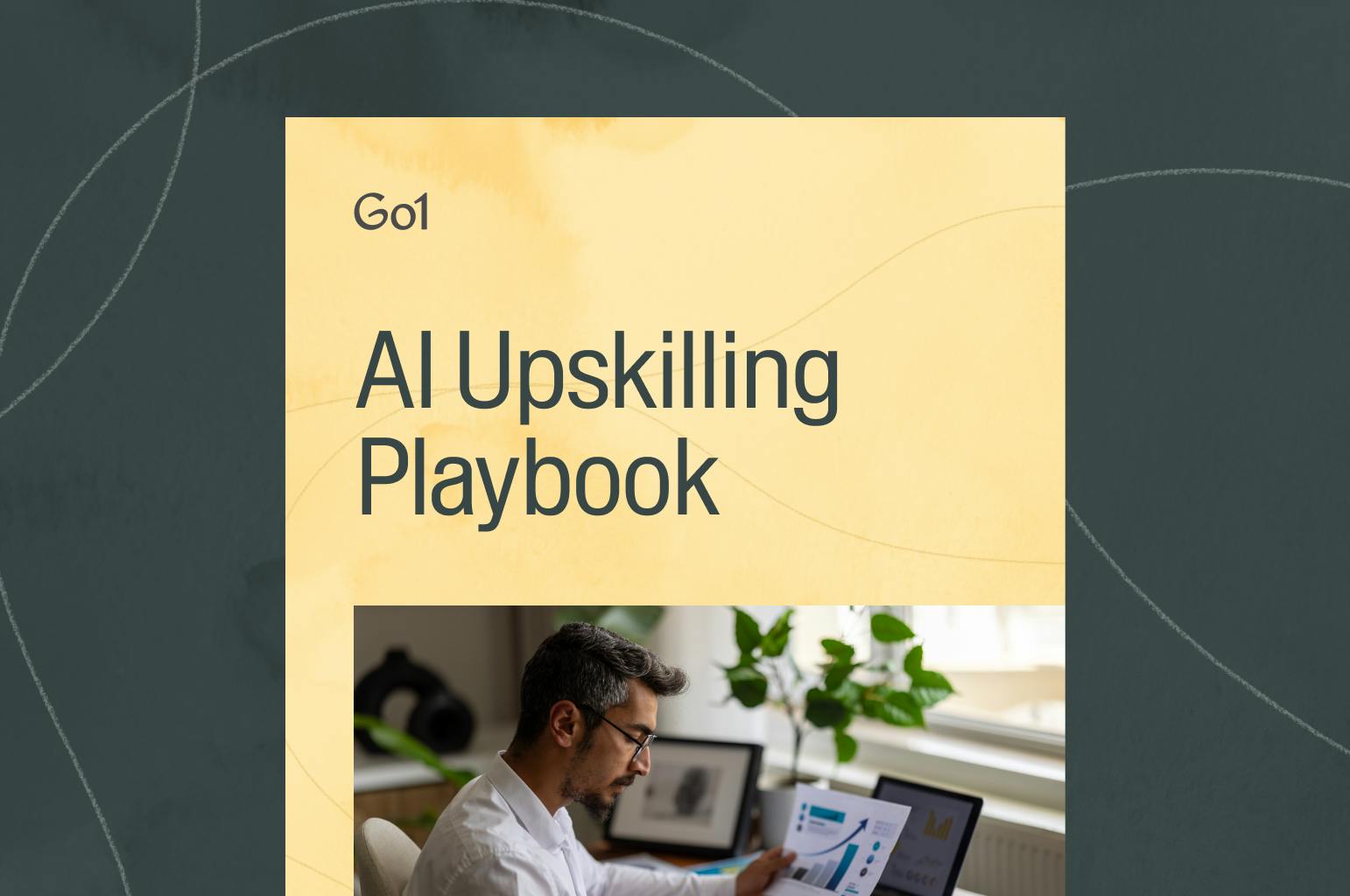Upskilling your leaders into better people managers

We recently brought together a panel of L&D experts to discuss the evolving challenges of nurturing effective managers as well as strategies you can use to help your organization's leaders upskill.
Moderated by Danielle Stewart, Director of Brand Advocacy at Go1, panelists included Lynne McNamee, President and Founder of Lone Armadillo Learning; Deanna Foster, Senior Director of Global Solutions at Harvard Business Publishing; and Shenlee Walker, Director of Learning and Development at Hays. Their conversation covered a wide range of topics, from the role of people managers in driving L&D initiatives to how L&D teams can ensure their leadership programs are successful.
While the webinar produced many insightful takeaways, we've highlighted just a few below. Take a look, then watch the full webinar for even more insights.
Takeaway 1: Leaders have a significant impact on L&D
Our panelists all agreed—leadership isn't just a title, and a people manager's role goes far beyond merely overseeing tasks. Managers lead their teams to achieve their goals and create an environment where employees feel motivated, engaged, and valued.
"Leaders spend a lot of their time at work with their people," Shenlee reflected. "So they set the tone for engagement. They set the tone for culture. They set the tone for how people achieve results."
Because people leaders set the stage for employees to reach their full potential, they play a key role in shaping learning culture.
"60% of teams are focused on improving engagement within the workforce through L&D tools, communications, and learning culture," Danielle noted. People managers can use L&D to help them push their teams to be their best and stay motivated in their roles. As a result, leaders who foster a learning culture drive the success of L&D initiatives, which means it's important that we intentionally leverage managers as our L&D advocates.

Consider engaging new people managers early on by equipping them with the tools and resources they need to help their team take advantage of L&D offerings. Make sure you communicate with people leaders when new learning is available that may be helpful to them or their team. You might also ask managers for their input and establish regular feedback loops where they can weigh in on L&D programs. By keeping people managers engaged in L&D and collaborating with them regularly, you can create a work environment where learning is top of mind.
Takeaway 2: Leadership development should align with strategic business goals
It's important for L&D to align leadership development programs with the strategic goals of the organization. This alignment helps ensure the relevance and impact of learning programs, which makes them more appealing to both managers and executives.
According to Deanna, prioritizing learning that aligns with business goals makes good use of managers’ limited free time.
"There's never a shortage of skills to be developed, but we just can't afford to put more demands on people's time unless there's a direct benefit to the business priorities," Deanna stated. "When we work with our clients, we recommend that they start with the strategic pillars of their organization. What are the capabilities people need to learn to achieve the company's strategic goals?"

Plus, business alignment is often necessary to get executives on board with new L&D programs and initiatives.
"Executive buy-in comes from showing how learning is going to impact the business," Deanna said. "What are the executives' performance concerns? Design learning to achieve behavior change related to those concerns. That helps get their advocacy, which is ideally what you want."
Takeaway 3: Measuring the impact of programs is key to ensuring their success
Establishing clear measures of success is a vital step in continuing to improve your leadership development programs. According to Shenlee, it's important to identify exactly what success looks like before you launch a new learning program or initiative. If you don't know what you're measuring beforehand, it will be difficult to determine a program’s level of success after it has been launched.
"Measuring success is multifaceted," Shenlee said. "Asking the questions upfront really can help. Without defining success and determining data points, that's going to be hard to measure."
It's also important to be specific and pay close attention to details in order to understand what's working, what's not, and why. Lynne suggests asking questions like, what information is being measured? Who is measuring that information? Who is recording the information, and where is it being recorded? "Really just drill down on the technicalities to make sure you're really clear," she advised.
Not sure what information about your learning program to measure? Take some inspiration from the three areas of impact Deanna’s organization measures: impact on employees, impact on employee behavior, and impact on the business. "We measure engagement—the extent to which people participated in the learning," she explained. "And we collect evidence that learners applied new skills on the job. Impact on the business is measured by our clients to determine just how far learning moved the needle."
Watch the full webinar to learn how to market a program to people managers, incorporate learning in the flow of work, and keep your learning strategy relevant for the future.
Learning made simple

Related Articles

Application Guide: How to use the Go1 AI for L&D Maturity Assessment to assess our workforce AI capability

AI upskilling made clear: A practical guide to building an AI-ready workforce

Go1 welcomes PepTalk

5 Data-Backed Insights Shaping the Future of AI in Workplace Learning

Train smarter, spend less
Train smarter,spend less
Connect with a Go1 expert to explore the best training options for your organization—no pressure, just solutions that work.